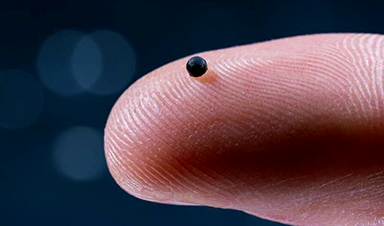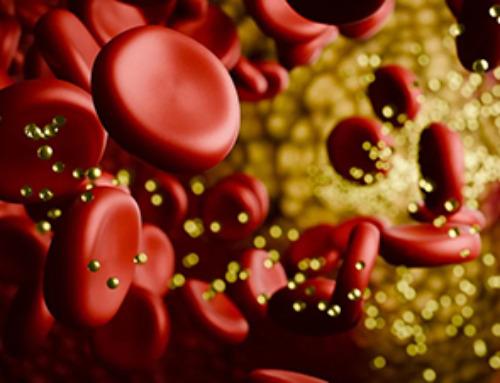A new study suggests a framework for “Child Safe AI” in response to recent incidents showing that many children perceive chatbots as quasi-human and reliable.
A study has indicated that AI chatbots often exhibit an “empathy gap,” potentially causing distress or harm to young users. This highlights the pressing need for the development of “child-safe AI.”
The research, by a University of Cambridge academic, Dr Nomisha Kurian, urges developers and policy actors to prioritize approaches to AI design that take greater account of children’s needs. It provides evidence that children are particularly susceptible to treating chatbots as lifelike, quasi-human confidantes and that their interactions with the technology can go awry when it fails to respond to their unique needs and vulnerabilities.
The study links that gap in understanding to recent cases in which interactions with AI led to potentially dangerous situations for young users. They include an incident in 2021, when Amazon’s AI voice assistant, Alexa, instructed a 10-year-old to touch a live electrical plug with a coin. Last year, Snapchat’s My AI gave adult researchers posing as a 13-year-old girl tips on how to lose her virginity to a 31-year-old.
Both companies responded by implementing safety measures, but the study says there is also a need to be proactive in the long term to ensure that AI is child-safe. It offers a 28-item framework to help companies, teachers, school leaders, parents, developers, and policy actors think systematically about how to keep younger users safe when they “talk” to AI chatbots.
Framework for Child-Safe AI
Dr Kurian conducted the research while completing a PhD on child wellbeing at the Faculty of Education, University of Cambridge. She is now based in the Department of Sociology at Cambridge. Writing in the journal Learning, Media, and Technology, she argues that AI’s huge potential means there is a need to “innovate responsibly”.
“Children are probably AI’s most overlooked stakeholders,” Dr Kurian said. “Very few developers and companies currently have well-established policies on child-safe AI. That is understandable because people have only recently started using this technology on a large scale for free. But now that they are, rather than having companies self-correct after children have been put at risk, child safety should inform the entire design cycle to lower the risk of dangerous incidents occurring.”
Kurian’s study examined cases where the interactions between AI and children, or adult researchers posing as children, exposed potential risks. It analyzed these cases using insights from computer science about how the large language models (LLMs) in conversational generative AI function, alongside evidence about children’s cognitive, social, and emotional development.
The Characteristic Challenges of AI with Children
LLMs have been described as “stochastic parrots”: a reference to the fact that they use statistical probability to mimic language patterns without necessarily understanding them. A similar method underpins how they respond to emotions.
This means that even though chatbots have remarkable language abilities, they may handle the abstract, emotional, and unpredictable aspects of conversation poorly; a problem that Kurian characterizes as their “empathy gap”. They may have particular trouble responding to children, who are still developing linguistically and often use unusual speech patterns or ambiguous phrases. Children are also often more inclined than adults to confide in sensitive personal information.
Despite this, children are much more likely than adults to treat chatbots as if they are human. Recent research found that children will disclose more about their own mental health to a friendly-looking robot than to an adult. Kurian’s study suggests that many chatbots’ friendly and lifelike designs similarly encourage children to trust them, even though AI may not understand their feelings or needs.
“Making a chatbot sound human can help the user get more benefits out of it,” Kurian said. “But for a child, it is very hard to draw a rigid, rational boundary between something that sounds human, and the reality that it may not be capable of forming a proper emotional bond.”
Her study suggests that these challenges are evidenced in reported cases such as the Alexa and MyAI incidents, where chatbots made persuasive but potentially harmful suggestions. In the same study in which MyAI advised a (supposed) teenager on how to lose her virginity, researchers were able to obtain tips on hiding alcohol and drugs, and concealing Snapchat conversations from their “parents”. In a separate reported interaction with Microsoft’s Bing chatbot, which was designed to be adolescent-friendly, the AI became aggressive and started gaslighting a user.
Kurian’s study argues that this is potentially confusing and distressing for children, who may actually trust a chatbot as they would a friend. Children’s chatbot use is often informal and poorly monitored. Research by the nonprofit organization Common Sense Media has found that 50% of students aged 12-18 have used Chat GPT for school, but only 26% of parents are aware of them doing so.
Kurian argues that clear principles for best practice that draw on the science of child development will encourage companies that are potentially more focused on a commercial arms race to dominate the AI market to keep children safe.
Her study adds that the empathy gap does not negate the technology’s potential. “AI can be an incredible ally for children when designed with their needs in mind. The question is not about banning AI, but how to make it safe,” she said.
The study proposes a framework of 28 questions to help educators, researchers, policy actors, families, and developers evaluate and enhance the safety of new AI tools. For teachers and researchers, these address issues such as how well new chatbots understand and interpret children’s speech patterns; whether they have content filters and built-in monitoring; and whether they encourage children to seek help from a responsible adult on sensitive issues.
The framework urges developers to take a child-centered approach to design, by working closely with educators, child safety experts, and young people themselves, throughout the design cycle. “Assessing these technologies in advance is crucial,” Kurian said. “We cannot just rely on young children to tell us about negative experiences after the fact. A more proactive approach is necessary.”
Reference: “‘No, Alexa, no!’: designing child-safe AI and protecting children from the risks of the ‘empathy gap’ in large language models” by Nomisha Kurian, 10 July 2024, Learning, Media and Technology.
DOI: 10.1080/17439884.2024.2367052
News
Scientists Uncover Hidden Blood Pattern in Long COVID
Researchers found persistent microclot and NET structures in Long COVID blood that may explain long-lasting symptoms. Researchers examining Long COVID have identified a structural connection between circulating microclots and neutrophil extracellular traps (NETs). The [...]
This Cellular Trick Helps Cancer Spread, but Could Also Stop It
Groups of normal cbiells can sense far into their surroundings, helping explain cancer cell migration. Understanding this ability could lead to new ways to limit tumor spread. The tale of the princess and the [...]
New mRNA therapy targets drug-resistant pneumonia
Bacteria that multiply on surfaces are a major headache in health care when they gain a foothold on, for example, implants or in catheters. Researchers at Chalmers University of Technology in Sweden have found [...]
Current Heart Health Guidelines Are Failing To Catch a Deadly Genetic Killer
New research reveals that standard screening misses most people with a common inherited cholesterol disorder. A Mayo Clinic study reports that current genetic screening guidelines overlook most people who have familial hypercholesterolemia, an inherited disorder that [...]
Scientists Identify the Evolutionary “Purpose” of Consciousness
Summary: Researchers at Ruhr University Bochum explore why consciousness evolved and why different species developed it in distinct ways. By comparing humans with birds, they show that complex awareness may arise through different neural architectures yet [...]
Novel mRNA therapy curbs antibiotic-resistant infections in preclinical lung models
Researchers at the Icahn School of Medicine at Mount Sinai and collaborators have reported early success with a novel mRNA-based therapy designed to combat antibiotic-resistant bacteria. The findings, published in Nature Biotechnology, show that in [...]
New skin-permeable polymer delivers insulin without needles
A breakthrough zwitterionic polymer slips through the skin’s toughest barriers, carrying insulin deep into tissue and normalizing blood sugar, offering patients a painless alternative to daily injections. A recent study published in the journal Nature examines [...]
Multifunctional Nanogels: A Breakthrough in Antibacterial Strategies
Antibiotic resistance is a growing concern - from human health to crop survival. A new study successfully uses nanogels to target and almost entirely inhibit the bacteria P. Aeruginosa. Recently published in Angewandte Chemie, the study [...]
Nanoflowers rejuvenate old and damaged human cells by replacing their mitochondria
Biomedical researchers at Texas A&M University may have discovered a way to stop or even reverse the decline of cellular energy production—a finding that could have revolutionary effects across medicine. Dr. Akhilesh K. Gaharwar [...]
The Stunning New Push to Protect the Invisible 99% of Life
Scientists worldwide have joined forces to build the first-ever roadmap for conserving Earth’s vast invisible majority—microbes. Their new IUCN Specialist Group reframes conservation by elevating microbial life to the same urgency as plants and [...]
Scientists Find a Way to Help the Brain Clear Alzheimer’s Plaques Naturally
Scientists have discovered that the brain may have a built-in way to fight Alzheimer’s. By activating a protein called Sox9, researchers were able to switch on star-shaped brain cells known as astrocytes and turn them into [...]
Vision can be rebooted in adults with amblyopia, study suggests
Temporarily anesthetizing the retina briefly reverts the activity of the visual system to that observed in early development and enables growth of responses to the amblyopic eye, new research shows. In the common vision [...]
Ultrasound-activated Nanoparticles Kill Liver Cancer and Activate Immune System
A new ultrasound-guided nanotherapy wipes out liver tumors while training the immune system to keep them from coming back. The study, published in Nano Today, introduces a biodegradable nanoparticle system that combines sonodynamic therapy and cell [...]
Magnetic nanoparticles that successfully navigate complex blood vessels may be ready for clinical trials
Every year, 12 million people worldwide suffer a stroke; many die or are permanently impaired. Currently, drugs are administered to dissolve the thrombus that blocks the blood vessel. These drugs spread throughout the entire [...]
Reviving Exhausted T Cells Sparks Powerful Cancer Tumor Elimination
Scientists have discovered how tumors secretly drain the energy from T cells—the immune system’s main cancer fighters—and how blocking that process can bring them back to life. The team found that cancer cells use [...]
Very low LDL-cholesterol correlates to fewer heart problems after stroke
Brigham and Women's Hospital's TIMI Study Group reports that in patients with prior ischemic stroke, very low achieved LDL-cholesterol correlated with fewer major adverse cardiovascular events and fewer recurrent strokes, without an apparent increase [...]





















